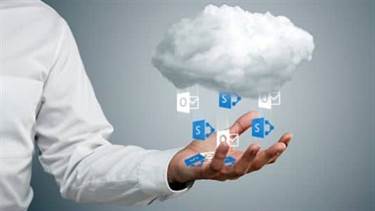Wiley University Services maintains this website on behalf of The University of Scranton. Education does not guarantee outcomes including but not limited to employment or future earnings potential. Maryia is an avid technology enthusiast who constantly follows the developments in the industry and enjoys shedding light on the hottest IT topics.

Other important components are inquiry handling, contact handling, order control, pricing control, and invoicing. The main goal of CRM software is to help marketing and sales departments develop and maintain effective communication with prospects and clients. CRMs allow enterprises to analyze marketing and sales KPIs, streamline processes, and increase profitability. A balanced scorecard is a framework that not only provides performance measurements, but also helps business planners identify what should be done and what should be measured. It also provides a clear vision as to what a business should measure in order to ‘balance’ the organizations financial perspective. The balanced scorecard is an executive support management system that enables organizations to clarify their business or organizational visions and strategies and then translate them into an action plan.
The Three Major Enterprise Applications
Pipedrive is a CRM enhanced with rich features to improve work of marketers and business development managers. It helps track customer communication with the help of a clear and transparent display of all ongoing company processes. These programs automate operations in different types of organizations, governmental bodies, civil societies, and other groups. These activities may include product development, material sourcing, production and logistics as well as the information systems that coordinate these activities. Information flows allow supply chain partners to coordinate their strategic and operational plans as well as the day-to-day flow of goods and materials through the supply chain.
- The key is to prevent ERP projects from being split into smaller projects, which can result in cost overruns.
- Enterprise software has evolved into large-scale systems for the operation of the most modern enterprises and today it’s impossible to ignore their impact on these enterprises’ success.
- During her career, she has published business and technology-based articles and texts.
- Many ERP software applications are critical to companies because they help them implement resource planning by integrating all the processes needed to run their companies with a single system.
- Businesses implement Enterprise Resource Planning (ERP) to integrate procurement, finance, accounting, marketing, and human resources processes.
As a cloud marketing program, Drip allows smooth automated functions, multichannel marketing, personalization of email messages and detailed reporting on client actions. This is the reason many ERP platforms start with a set of core modules, which allows for a highly flexible approach to suit unique business requirements. Helps in consolidating data from different departments, offering a unified, consistent view of business information.
ERP Weaknesses
This is beneficial for businesses that operate globally, as they can scale to any size. Moreover, it also simplifies the management of global trade across contractors, suppliers, partners, and customers. Over the past few years, we have seen a significantly increased number of security breaches into corporate servers. Large multinational corporations such as Home Depot, Target, Sony, and many others have seen their supposedly secure data centers breached, often at the cost of hundreds of millions, or even billions of dollars. Securing customer data is not just imperative for a good customer experience; it is an essential financial priority as well.

Overall, enterprise software development can significantly increase employee performance, improve the transparency of the business, and manage each department’s operational efficiency. Customer relationship management systems are customized to meet the specific needs of a business. Nowadays, CRM has become the best technological asset for collecting customer data and forecasting sales or market opportunities. OpenPro offers business software solutions for every company looking for more value and more features from their ERP solutions. Since 1998 we have been delivering Web-based ERP software solutions to small and mid-sized companies, and international enterprises. OpenMFG (usually abbreviated “OMFG”) is an open source based, fully-integrated accounting, ERP, and CRM enterprise software solution, from xTuple.
Real-Time Access to Information
These systems can replace multiple independent systems that may or may not interact with other systems and that process data to support particular business functions or processes. ERP software solutions connect business processes and provide data exchange between them. Collecting the enterprise’s common data flow from multiple sources, such systems eliminate data duplication and ensure information integrity within a single source. A supply chain execution system manages what are the three primary types of enterprise systems? the flow of products through distribution centers and warehouses to ensure that products are delivered to the right locations in the most efficient manner. Supply chain management benefits include improved customer service and responsiveness, cost reduction, and cash utilization. EMS solutions typically support core business functions such as HR management, financial processing, budgeting, customer relationship management, sales activity, and supply chain management.
Compliance Issues in Cryptocurrency – Global Investigations Review
Compliance Issues in Cryptocurrency.
Posted: Thu, 12 Oct 2023 08:48:50 GMT [source]
It touches every facet of a modern enterprise, from customer service to operations, to social media, and to security. Over time, technology creates new jobs like mobile application developers, social media and business intelligence analysts, information security specialists, and data architects. Information technologies that integrate business functions across the enterprise, known as Enterprise Systems, have become the backbone of modern organizations. Enterprise Resource Planning (ERP) systems integrate enterprise applications (called modules) such as purchasing, finance, human resources, and inventory management into one cross-functional system.
Supply Chain Management (SCM)
Compiere (pronounced KOM-pyeh-reh, “to accomplish, complete, fulfill” in Italian) is an open source ERP and CRM business solution for the Small and Medium-sized Enterprise (SME) in distribution, retail, service and manufacturing. Compiere is distributed by Compiere, Inc. and through the Compiere Partner https://www.globalcloudteam.com/ Network, a collection of trained and authorized business partners. HubSpot helps marketers and sales managers reach out to contacts, nurture leads and monitor the results of campaigns. The work of both units is aligned since all information (for sales and marketing teams) is stored in one place.
Billie Nordmeyer works as a consultant advising small businesses and Fortune 500 companies on performance improvement initiatives, as well as SAP software selection and implementation. During her career, she has published business and technology-based articles and texts. Nordmeyer holds a Bachelor of Science in accounting, a Master of Arts in international management and a Master of Business Administration in finance. It allows enterprises to gradually implement key modules one at a time, that gains the ability to change certain areas without disrupting overall operations. However, it is important the modules are compatible with each other and easily integrated with the existing solutions, if any. Corporations require them to collect, process, and interpret a vast amount of data, tying together lots of business processes and enabling the flow of data between units to run operations efficiently.
Benefits of Enterprise Resource Planning
Elevate Your Business with Our Software Boost teamwork, enhance efficiency, and maintain your competitive edge with our expertise in Enterprise software development. Streamlines and automates business processes, reducing manual efforts and minimizing errors. Aids in identifying and mitigating supply chain risks, such as logistics risks, product, and raw materials shortages or demand volatility. Primarily aims to control the movement and storage of materials within a warehouse, including the receipt, storage and movement of goods to intermediate storage locations or to the final customer. In some cases, their use without modification does not solve all the tasks of the organization or is too expensive at a distance because of the subscription model.
As cloud-based solutions have grown in popularity in recent years, the traditional ERP industry leaders have seen challenges from upstarts such as Bizowie and Workwise. Employing change management principles throughout the ERP life cycle can prevent or reduce failures that compromise full implementation. A company could experience cost overruns if its ERP system is not implemented carefully. Once all departments are tied into the system, all data is collected on the server and becomes instantly available to those with permission to use it. Reports can be generated with metrics, graphs, or other visuals and aids a client might need to determine how the business and its departments are performing.
Improves Accuracy and Productivity
Meanwhile, executive support systems (ESS) can be built into many different specific software systems. The balanced scorecard is a specific ESS software program built to help organizations thrive in the economy. The balanced scorecard is an analysis tool to predict outcomes using current raw data.

